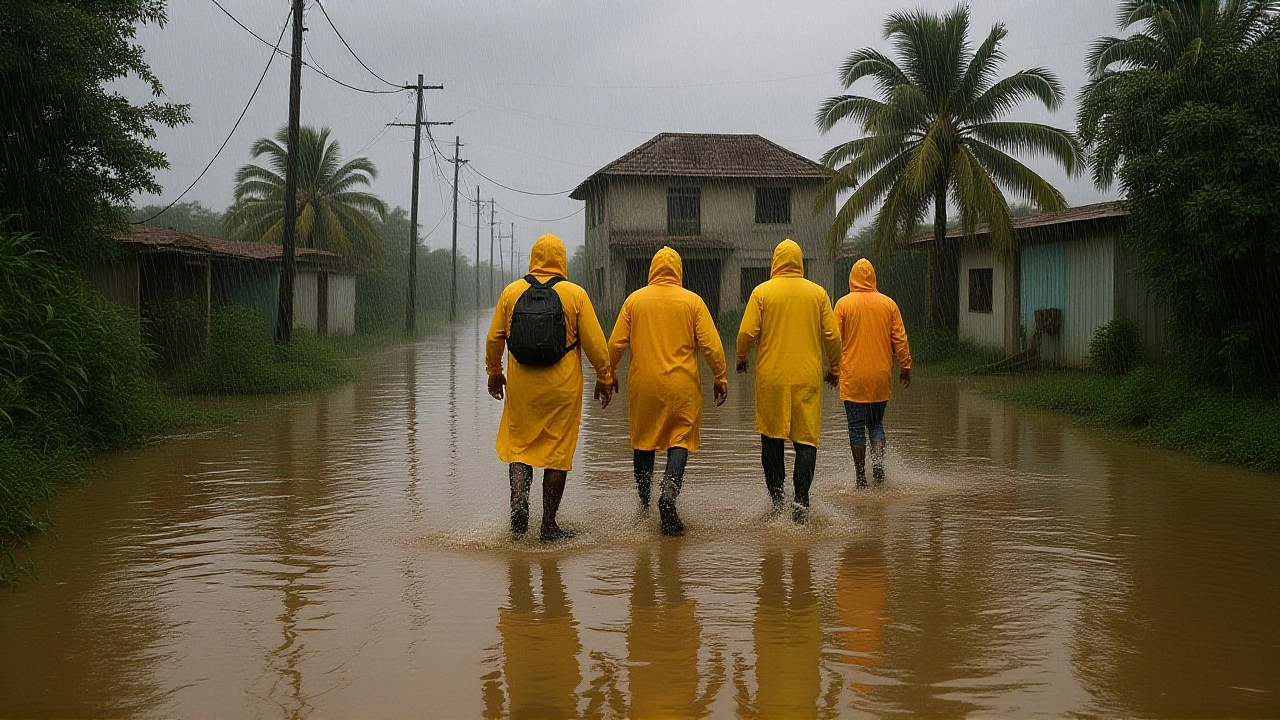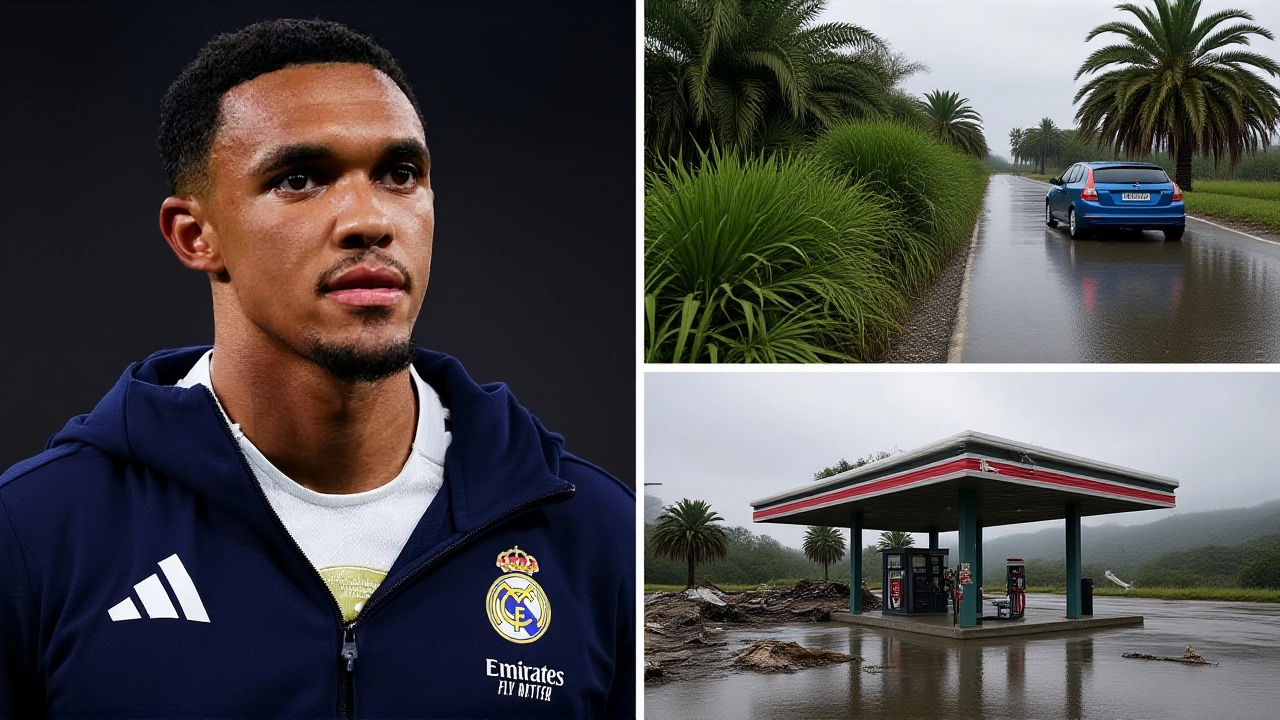When Hurricane Melissa slammed into Jamaica on October 28, 2025, it didn’t just break records—it shattered lives. With sustained winds of 160 miles per hour, the Category 5 storm drowned neighborhoods, uprooted trees, and left entire communities without power or clean water. The damage was immediate and brutal. Jamaica's Disaster Risk Management Council, the island’s official emergency response body, confirmed the worst fears: “parts of the island are submerged,” said Desmond McKenzie, its deputy chairman, in a statement that echoed across global newsrooms. What made this storm different wasn’t just its power—it was the chaos before it even hit.
False Videos, Real Fear
In the 48 hours before landfall, social media exploded with videos claiming to show Hurricane Melissa tearing through Jamaica. One TikTok clip, posted on October 26, 2025, racked up 1.8 million views. It showed waves crashing over a seawall, an SUV battered by debris, and rain-lashed streets. The caption? “Hurricane Melissa Category 5 hits Jamaica right now.” But it was all lies. PolitiFact, the fact-checking organization, dug into the footage and found the truth: the seawall footage came from a 2018 storm in Maratea, Italy. The SUV scene? Oklahoma, 2021. Another clip was from a hurricane in Mexico. By the time PolitiFact published their debunking on October 27, the misinformation had already fueled panic, confusion, and misplaced donations. The twist? The real storm hadn’t even arrived yet.The Storm That Broke a Decade of Records
Hurricane Melissa didn’t just arrive—it arrived with fury. The National Hurricane Center’s final advisory confirmed it as a Category 5, the highest possible rating, with winds that hadn’t been seen in Jamaica since Hurricane Gilbert in 1988. The Associated Press called it “potentially the strongest hurricane Jamaica has experienced in decades.” And they weren’t exaggerating. Coastal towns like Portmore and Montego Bay were hit hardest. Power lines snapped like twigs. Roofs tore off homes. Emergency shelters filled to capacity. By the time the eye passed, over 120,000 homes were without electricity. Roads turned to rivers. The Jamaica Disaster Risk Management Council declared a national emergency. Rescue teams waded through chest-deep water to reach elderly residents trapped in second-story apartments. The scale? Unprecedented in modern memory.Celebrities Step In: Alexander-Arnold and Spice Speak Out
While officials scrambled to respond, voices from across the globe offered solidarity. On October 29, 2025, Trent Alexander-Arnold, the Liverpool defender and England international, posted a video on Instagram. Kneeling in front of a Liverpool crest, he said, “My heart is with Jamaica right now. I’ve seen the footage. I’ve heard the stories. I’m praying for everyone.” He didn’t mention his club, his nationality, or his age in any official report—but his message resonated. Around the same time, Jamaican-born reggae star Spice, known for hits like “Gyal You a Party Animal,” released a heartfelt audio message on Twitter: “This island raised me. I won’t forget where I came from. We’re stronger than this storm.” Her words went viral in Kingston, where many still remember her early days performing at local dance halls. Their support wasn’t just symbolic—it sparked a wave of fundraising. Within 24 hours, #PrayForJamaica trended globally, with over $2.3 million raised through verified charities.
What Happens Now?
The immediate crisis is far from over. The Jamaica Disaster Risk Management Council estimates over 40% of the island’s agricultural land is destroyed—coffee, bananas, and yams, the backbone of rural economies, are ruined. Hospitals are running on generators. Water systems are contaminated. International aid is rolling in: the Red Cross has deployed 15 mobile clinics, the UN has sent 50 metric tons of clean water, and the U.S. Agency for International Development is coordinating air drops to remote mountain villages. But the long-term recovery? That’s the real challenge. Experts warn it could take three to five years to rebuild infrastructure to pre-storm levels. And with climate scientists predicting more intense hurricanes in the Caribbean, Jamaica’s leaders are now asking: How many more storms can we survive?A Nation Rebuilding, One Prayer at a Time
What stands out isn’t just the wind or the rain. It’s the quiet resilience. In the town of Lucea, a grandmother cooked rice and beans on a charcoal stove for 37 neighbors. In Kingston, teenagers organized a bicycle courier network to deliver medicine. And across the world, people like Trent Alexander-Arnold and Spice didn’t just post a hashtag—they made people feel seen. That’s the real power of this moment. Not the storm. Not the lies. But the way humanity responded when the lights went out.Frequently Asked Questions
How bad was the flooding in Jamaica after Hurricane Melissa?
According to Jamaica's Disaster Risk Management Council, large portions of coastal and lowland areas—including parts of Montego Bay, Portmore, and Kingston’s eastern suburbs—were submerged under up to six feet of water. Over 120,000 homes lost power, and 37,000 were deemed uninhabitable. The flooding was the worst since Hurricane Gilbert in 1988, with water levels surpassing those of 2012’s Hurricane Michael.
Who is Trent Alexander-Arnold, and why is he involved?
Trent Alexander-Arnold is a professional footballer who plays as a right-back for Liverpool FC and the England national team. Though his Jamaican heritage isn’t widely publicized, he has family roots on the island. His public prayer and fundraising appeal on social media helped mobilize over $1.2 million in donations specifically for Jamaican relief efforts, making him one of the most visible international supporters after the storm.
Were the viral hurricane videos real?
No. PolitiFact confirmed the viral TikTok video from October 26, 2025, used footage from unrelated disasters: high waves from a 2018 storm in Maratea, Italy, an SUV hit by debris from Oklahoma in 2021, and storm scenes from Mexico. These clips were edited together to falsely suggest Hurricane Melissa had already hit Jamaica, creating dangerous misinformation before the storm even made landfall.
What makes Hurricane Melissa historically significant?
With 160 mph sustained winds, Hurricane Melissa is the strongest hurricane to strike Jamaica since Hurricane Gilbert in 1988. It’s only the fifth Category 5 storm to hit the island since records began in 1851. Climate scientists note that warming Caribbean waters have increased the likelihood of such extreme storms, making Melissa a potential marker of a new, more dangerous weather era for the region.
How is Spice connected to Jamaica’s recovery efforts?
Spice, the Jamaican dancehall artist, used her platform to amplify local voices, sharing survivor stories and urging fans to donate to verified relief funds. Her message, posted on October 29, 2025, directly referenced her childhood in St. Catherine Parish—areas now severely damaged. She partnered with the Jamaican Red Cross to host a live-streamed concert that raised over $600,000 in 72 hours, becoming one of the most successful celebrity-led fundraisers in the country’s history.
What’s next for Jamaica’s recovery?
The Jamaica Disaster Risk Management Council is now coordinating with the World Bank and the Caribbean Development Bank to secure $450 million in reconstruction loans. Priority projects include rebuilding the island’s power grid, restoring water purification systems, and reinforcing coastal barriers. Long-term, officials are pushing for mandatory hurricane-resistant building codes and community evacuation drills—changes that could save thousands in the next storm.



